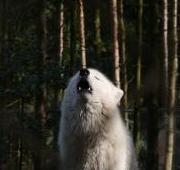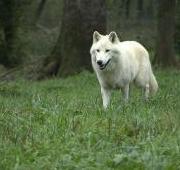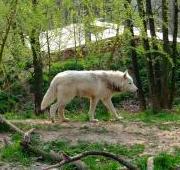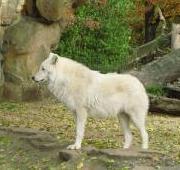 The Arctic wolf is found in the most northern parts of the wolf\'s range, in the Arctic Circle. Arctic wolves mainly inhabit Northern Canada and Alaska, parts of Greenland and Iceland and Northern Europe.
The Arctic wolf is found in the most northern parts of the wolf\'s range, in the Arctic Circle. Arctic wolves mainly inhabit Northern Canada and Alaska, parts of Greenland and Iceland and Northern Europe.  Arctic wolves are incredibly versatile and adaptive animals, able to withstand year round sub-zero temperatures. Living in the Arctic Circle, the Arctic wolf spends five out of twelve months in total darkness.
Arctic wolves are incredibly versatile and adaptive animals, able to withstand year round sub-zero temperatures. Living in the Arctic Circle, the Arctic wolf spends five out of twelve months in total darkness.


Normally, only the alpha male Arctic wolf and female Arctic wolves breed, but if a pack gets too large it may break up into new smaller packs giving others the opportunity to mate. Due to the Arctic Circle\'s uncompromising permafrost soil and the difficulty it poses for digging dens, Arctic wolves often use rock outcroppings, caves or even shallow depressions as dens instead.
Arctic wolf pups are born in litters of two or three in the months of May and June, meaning that the Arctic wolf pups are born about a month later than the gray wolf pups. Arctic wolves tend to be white with brown irises, unlike most other subspecies of wolves with yellow to amber eyes. White fur gives them camouflage in a snowy environment, and the darker irises give added protection to the eyes in a high glare environment.

